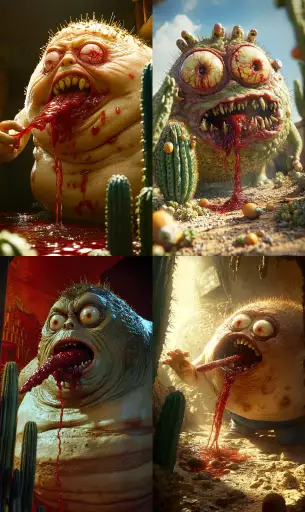Explore the Best AI Image Gallery

The AI Palette: How Artificial Intelligence is Reshaping Graphic Design
For decades, graphic design has been a realm dominated by human creativity, intuition, and technical skill. Yet, the advent of artificial intelligence (AI) is ushering in a new era, transforming the very fabric of this creative industry.
From generating stunning visuals to automating tedious tasks, AI is rapidly becoming an indispensable tool for designers, empowering them to push boundaries and explore uncharted territories. But as with any powerful technology, AIs integration into graphic design raises important ethical considerations and prompts us to contemplate the future of creativity itself.
AI-Powered Design: A New Arsenal for Creatives
The capabilities of AI in graphic design are vast and continuously evolving. Here are just a few ways AI is reshaping the creative landscape:
- Logo and Branding Design: AI algorithms can analyze trends, generate unique logo concepts based on specific requirements, and even suggest color palettes that resonate with target audiences.
- Image Generation and Editing: AI-powered tools can create original images from text descriptions (text-to-image generation), manipulate existing photographs, remove backgrounds, and enhance visual details with remarkable precision.
- Layout and Typography Optimization: AI can analyze design elements, suggest optimal layouts for brochures, websites, and other materials, and even choose fonts that enhance readability and brand identity.
- Personalized Content Creation: AI can generate personalized designs for marketing campaigns, product packaging, or social media posts, tailoring visuals to specific demographics or user preferences.
The Ethical Dimensions of AI in Design
While the potential benefits of AI in graphic design are undeniable, its crucial to address the ethical considerations that accompany this technological advancement:
- Job Displacement: Concerns exist that AI-powered tools may automate tasks currently performed by human designers, potentially leading to job losses in the industry.
- Bias and Fairness: AI algorithms are trained on vast datasets, which can inadvertently reflect existing societal biases. This can result in designs that perpetuate stereotypes or discriminate against certain groups.
- Copyright and Intellectual Property: The ownership of designs generated by AI raises complex legal questions. Who holds the copyright to AI-created artwork? How do we protect the intellectual property rights of both humans and machines?
Navigating the Future: Collaboration and Human-Centered Design
The future of graphic design lies in a harmonious collaboration between human creativity and AI capabilities. Rather than viewing AI as a replacement for designers, its essential to embrace it as a powerful tool that augments human ingenuity:
- AI as a Creative Assistant: Designers can leverage AI to automate repetitive tasks, generate initial concepts, and explore innovative design solutions, freeing up time for higher-level creative thinking.
- Human Oversight and Ethical Guidance**: Designers must maintain control over the creative process, ensuring that AI-generated designs align with ethical principles, cultural sensitivities, and user needs.
- Lifelong Learning and Adaptability**: Designers need to continuously learn and adapt to the evolving landscape of AI technologies, acquiring new skills and embracing a mindset of lifelong learning.
The integration of AI into graphic design is a transformative journey. By embracing its potential while addressing ethical considerations and fostering human-centered design practices, we can unlock a future where creativity flourishes in unprecedented ways.
](https://images.ai-img.art/thumbnails/150/c2c9c48b38fae37f0a457b80b084ed01ba803810fc8f488c8f610c03abc74049.webp)















](https://images.ai-img.art/thumbnails/150/f9584153b4cddd8c9fab611dc10247549b275c59bc173251e37d0935874f9deb.webp)














](https://images.ai-img.art/thumbnails/150/008b5d5d49667cc2e93a5f8a8adfaa545963da99c39ff0901f5296294636400d.webp)


](https://images.ai-img.art/thumbnails/150/bddf3ae4a232290858389b933c866ad3be429ef2e25c23a9f4d7713ed6e44d0b.webp)





](https://images.ai-img.art/thumbnails/150/4289d1230b86a96c4d556636c3167bed0ef38f850826549517e4e45db4d87bf7.webp)
](https://images.ai-img.art/thumbnails/150/f67d9af3398150f2ab1bcf250717fea134275e2ca896252b54a4d9bb3719f9ac.webp)